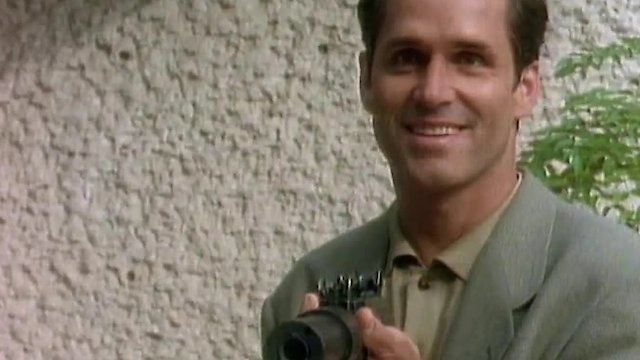
Split Images
Where to Watch Split Images

Split Images is a compelling drama that delves into the murky waters of fame, obsession, and the intricate dynamics of the media. Released in 1992, the film captivates audiences with its exploration of the darker side of celebrity through the lens of a gripping narrative that intertwines personal ambition with the relentless pursuit of truth.
The story unfolds primarily around the character of a skilled photographer played by Gregory Harrison. His character, a professional caught in the throes of his career, is passionate about capturing the essence of his subjects. He is depicted as both talented and conflicted, navigating the tumultuous relationship between fame and privacy. Harrison’s portrayal brings depth to the character, allowing viewers to empathize with his struggles and aspirations.
The plot thickens as the photographer becomes entwined in the life of a rising star, played by Rebecca Jenkins. Jenkins delivers a nuanced performance that showcases her character’s innocence and vulnerability, creating a stark contrast with the cutthroat world of fame surrounding her. As she navigates the haunting pressure of public scrutiny and the constant flash of cameras, her journey highlights the personal costs of success in an industry often characterized by its superficiality.
Complementing these two central characters is Robert Collins, who adds another layer to the narrative. His character serves as a critical figure navigating the complex web of relationships that connect the media, the audience, and the stars themselves. Collins’ performance adds tension and depth, exemplifying the ethical dilemmas faced by those who seek to balance their ambition with the moral ramifications of their actions.
The movie effectively leverages its setting to enhance its themes, utilizing the vibrant backdrop of the entertainment industry as a character in its own right. The cinematography captures the essence of the glamor and grit of show business, juxtaposing the dazzling allure of fame with the darker, often exploitative undercurrents that run through it. From bright red carpets to dimly lit backrooms, the visual storytelling underscores the theme that appearances can be deceiving, and the true cost of fame is seldom seen.
Split Images also engages with larger societal questions, reflecting on how the media shapes public perception and feeds the insatiable hunger for sensationalism. This commentary on contemporary culture resonates with audiences, inviting them to critically examine their own consumption of celebrity news and reality television. As the narrative unfolds, viewers are challenged to confront their complicity in the fetishization of fame and the consequences this has on those in the spotlight.
The film’s pacing balances moments of intense drama with quieter, reflective scenes that allow the characters’ internal struggles to breathe. This rhythm creates a dynamic viewing experience, as audiences are drawn into the turmoil of the protagonist’s life while also reflecting on the moral ambiguities that permeate the storyline. The narrative cleverly intertwines personal and professional conflicts, prompting viewers to consider the sacrifices made in the name of ambition.
Sound design plays a crucial role in building the atmosphere of the film. The score complements the emotional beats, weaving through the narrative with an evocative quality that amplifies the tension and thematic depth. The music enhances the action on screen, guiding the audience through the emotional landscape of the characters’ experiences, and contributing to the film's ability to create an immersive experience.
As the story progresses, viewers witness the splintering of relationships and the resulting alienation that often accompanies fame. The characters’ intertwined journeys offer a poignant commentary on the human experience—how ambition can lead to connection, betrayal, and redemption. Each character is poignantly flawed, navigating their own desires and demons against the backdrop of an industry that rarely offers solace.
The film also successfully avoids becoming a simple cautionary tale about the perils of fame. Instead, it presents a multi-faceted exploration of its impact on personal identity and relationships. It encourages the audience to empathize with the characters, recognizing their struggles as reflections of broader existential questions that resonate beyond the confines of Hollywood.
Ultimately, Split Images is a thought-provoking drama that navigates the intersection of personal ambition and societal obsession with fame. Through its richly developed characters, layered storytelling, and insightful commentary on the media landscape, the film engages viewers in a compelling narrative that lingers long after the credits roll. It invites audiences to reflect on the images we create and consume, challenging them to look beyond the surface and consider the real lives behind those fleeting moments of fame.
Split Images is a TV Movie, Mystery, Thriller movie released in 1992. Critics and viewers have rated it moderate reviews, with an IMDb score of 5.1..
How to Watch Split Images
Where can I stream Split Images movie online? Split Images is available to watch and stream at Tubi TV.
